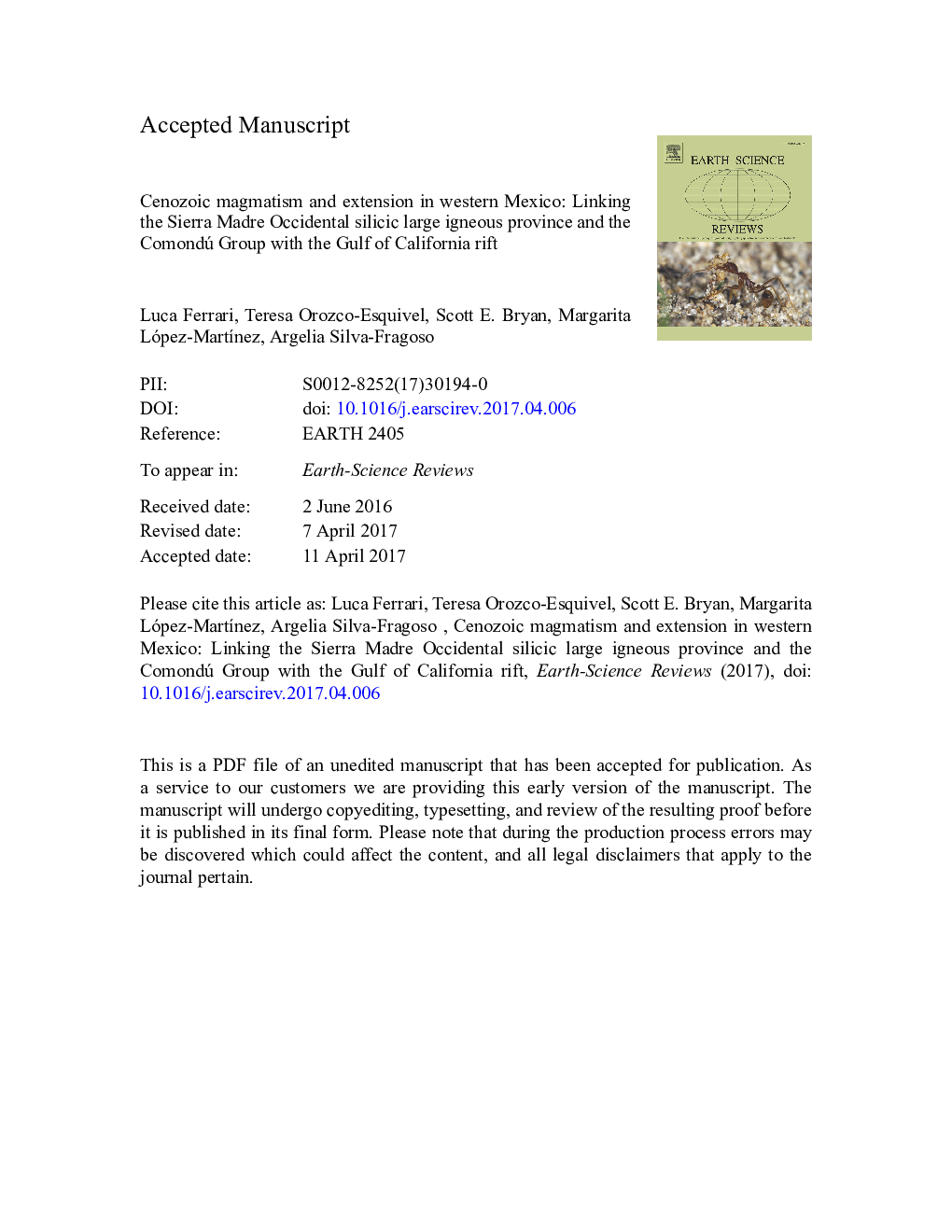| Article ID | Journal | Published Year | Pages | File Type |
|---|---|---|---|---|
| 8912912 | Earth-Science Reviews | 2018 | 153 Pages |
Abstract
The tectono-magmatic evolution of western Mexico and, by extension, southwestern USA can be interpreted in the frame of recent plate reconstructions and seismic tomography models. The removal of the subducted slab began in the early Eocene with the separation of the Vancouver plate from the rest of the Farallon plate, whose diffuse plate boundary intersected Mexico at the latitude of the Sonora-Sinaloa border and moved progressively North. Since then, a slab window/slab-free area began to grow by rollback and slab fragmentation and detachment promoting the melting of the ascending asthenosphere, the mantle lithosphere, and crust, which are variably observed in the igneous records of the SMO and Comondú Group. The ascent of buoyant and hot mantle also favored crustal extension in a broad area that progressively focused in the Gulf of California region.
Related Topics
Physical Sciences and Engineering
Earth and Planetary Sciences
Geology
Authors
Luca Ferrari, Teresa Orozco-Esquivel, Scott E. Bryan, Margarita López-MartÃnez, Argelia Silva-Fragoso,
